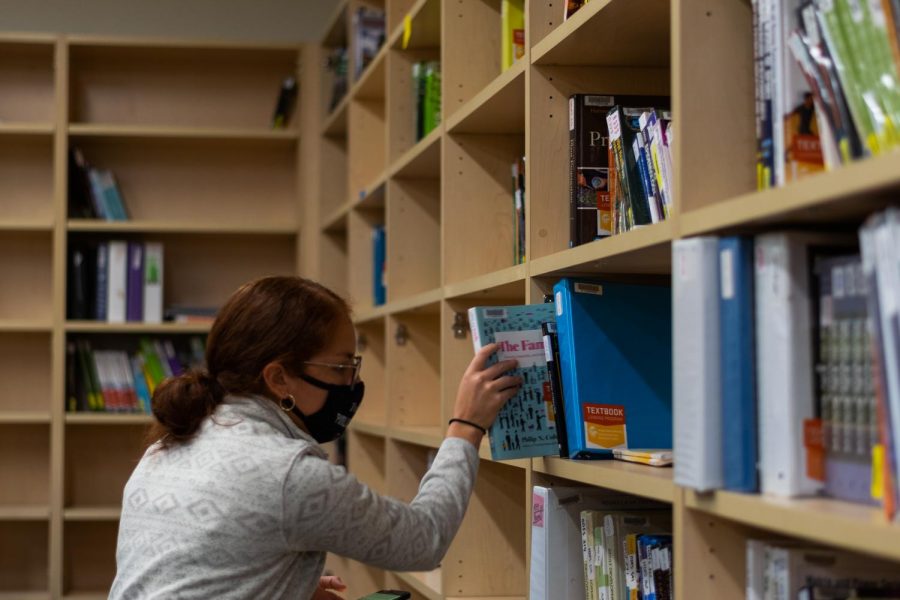Malick: Students should use on-campus textbook resources
Preciosa Martinez, the graduate assistant of the Human Services Resource Center textbook lending program, retrieves a book from a shelf on Monday, Sept. 27th. The textbook lending program provides textbooks at no cost to students in need.
October 3, 2021
Editor’s Note: This column does not represent the opinion of The Daily Barometer. This column reflects the personal opinions of the writer.
One of the many benefits of being back on campus this fall is students’ ability to use various available textbook resources, which can help them save money.
According to research published by College Board, students at public, four-year, in-state colleges spent an average of $1,240 on textbooks in 2020. This cost can be cut back, of course, by buying used textbooks and renting textbooks. Alternatively, students can skip the hassle by using the Oregon State University Human Services Resource Center’s Textbook Lending Program or by using the book scanners in the OSU Valley Library to email PDF copies of pages to themselves.
The HSRC is located on the east side of campus on SW Madison Avenue. The textbook lending program is free for all students. Textbooks borrowed from the HSRC may be used for the full term as opposed to the three-hour limit at the Valley Library.
The textbook lending program runs primarily on textbooks donated by students. OSU also provides the HSRC with funds to buy textbooks. The HSRC buys textbooks based on students’ requests and the books asked for most often.
“This was a unique situation in the sense that [with] COVID-19, it was really hard to gather that information, so this is probably the first [fall] term we haven’t purchased books,” said Preciosa Martinez, graduate assistant for the HSRC Textbook Lending Program. “We did run out of books pretty quickly [this term].”
According to Martinez, they have limited space and processing ability.
The HSRC does prioritize textbook access to students participating in: the Supplemental Nutrition Assistance Program with an Oregon Trail Card; Education Opportunities Program; College Assistance Migrant Program; TRIO; Louis Stokes Alliance for Minority Participation; and Science, Technology, Engineering and Mathematics Leaders. They also prioritize students with Pell grants, former foster-youth students and child care subsidy recipients as determined from the Family Resource Center.
During week zero of each term, the students with priority access can check out textbooks. From week one onward, it runs on a first-come, first-served basis.
If the HSRC runs out of the textbooks students need, however, the Valley Library has other free options. Although printing at the Valley Library isn’t free, the use of the scanners is free. This allows students to check out textbooks and make copies they can take home.
“We have print copies of our course reserves available for three-hour checkouts,” said Sagan Wallace, the library experience and access department evening supervisor. “Our ebooks are available for everything from a one-hour checkout—with renewals if no one else is waiting for the book—to several weeks, depending on what license we were able to get.”
Wallace said students who want to reserve a book can fill out the request form for online course reserves. From there, the library will either purchase the textbooks as ebooks or scan the chapters and make them available through their catalog.
“We can also look it up at the front desk or through our chat reference program,” Wallace said. “Also, the earlier you’re able to make a request, the better because sometimes we have to order a print copy of the book and that can take a few weeks to get here.”
These options are incredible resources and allow students to minimize their spending on textbooks. As tuition increases, resources like these will become more and more important. More students should take advantage of these resources, as it will free up money for food, housing, transportation and other school supplies.






















































































































